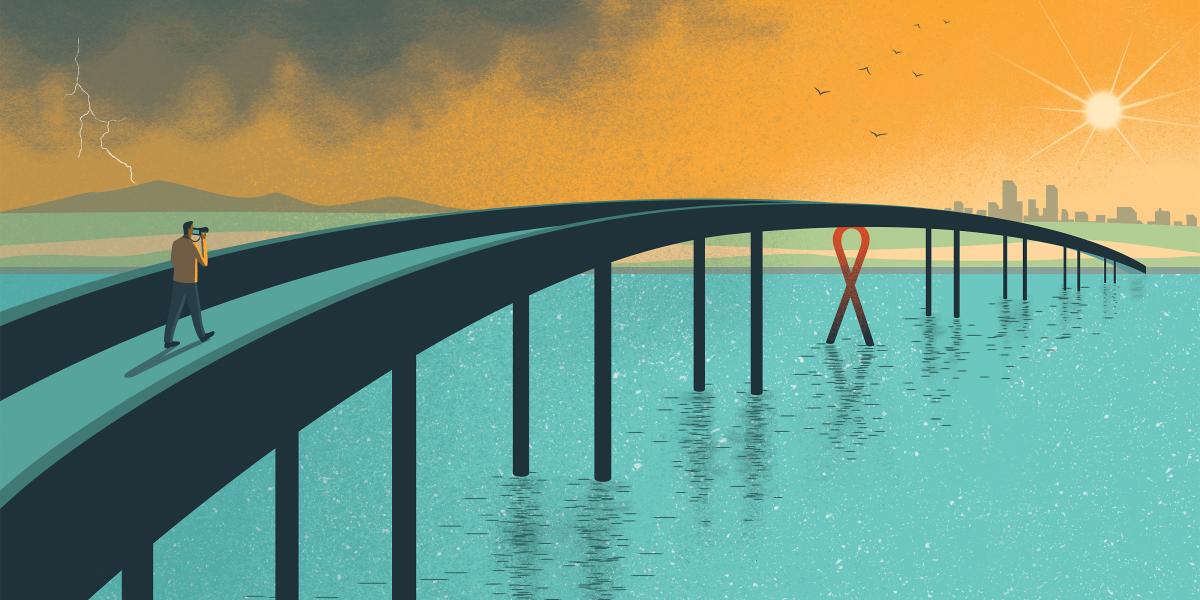A Microenterprise Approach to HIV Prevention for Young Adults in Baltimore
To prevent HIV in young adults, show them a future worth working for.
When you think about HIV prevention efforts in the U.S., one word probably comes to mind: condoms. Our HIV prevention strategies have often relied on educational and biomedical strategies: promoting condom use and drug adherence. These efforts are important and should continue, but they are not enough, especially in high-poverty areas.
We also need to address underlying mechanisms of HIV risk.
Young adults in their early to mid-20s have among the highest HIV infection rates compared to other age groups. Those who are unemployed or underemployed, and those who are homeless or experience housing instability are especially vulnerable. HIV prevalence is 2.6 times higher among the unemployed and 2 to 10 times higher among homeless individuals. African-American young adults—who are disproportionately impacted by communities with high rates of poverty and HIV—are especially at risk.
My training is in population, family and reproductive health. I’ve been working in low-income countries for more than 10 years, primarily in sub-Saharan Africa, focusing on prevention of maternal and neonatal mortality. In clinics where we observed high HIV prevalence, we encouraged pregnant women to get tested for HIV and, if needed, to start and adhere to lifesaving antiretroviral therapies.
However, many of those behavioral interventions had financial implications, such as paying to access clinics and community health services. And we were working with very poor families.
Microenterprise (or very small-scale business) has shown promise for such low-income families. Providing small grants, along with business training, microenterprise enables families to earn income that can be used to improve their health. For example, a group of women might start a basket-weaving business. They come together each week to learn how to weave, set up their business and find customers. The training might additionally include information on family planning, HIV prevention or nutrition.
Microenterprise has been shown in many low-income countries to improve condom use, adherence and HIV communication and testing. But we’ve seen very few of these interventions implemented in the U.S.
My hope is to take an intervention that has worked in other countries and modify it for an urban U.S. context. Given the disproportionate HIV burden experienced by lower-income African-American young adults, reducing sexual risk behaviors in this population through interventions that decrease economic drivers of sexual risk-taking could have a considerable effect.
Partnering with two community organizations in Baltimore that provide emergency housing to homeless youth, we are identifying young adults ages 18 to 24 who are out of school, unemployed or working fewer than 10 hours a week, and engaging in unprotected sex (defined as sex without a condom or in absence of any preventive HIV medications).

We’re basing our approach on asset theory, which suggests that youth with financial and social assets have a more positive outlook. They are more likely to invest in positive and healthy behaviors than youth who have limited future aspirations. According to this theory, helping young adults identify ways to minimize negative outcomes for things they care about—such as relationships, education or occupational goals—may be an effective health promotion strategy. For example, reducing exposure to HIV could be pivoted toward building healthy sexual relationships and maintaining good health to pursue business or employment goals.
Our formative research over the last two years suggests that young people would welcome this kind of intervention. Among the 41 homeless and unemployed young adults we talked to, 29 percent reported trading unprotected sex for housing or money and 90 percent reported knowing a peer who had done so. They expressed frustration with the low-wage jobs available to them, such as working at McDonald’s, which were not aligned with their talents and interests. Many of them were already engaged in the informal sector, trying to sell things like jewelry or T-shirts.
One young woman said that she would love to start a photography business. Our intervention would provide a small grant to help her buy a camera or an extra lens, and we would partner her with a mentor or suggest some free online training. Some young men described having to hustle for money in ways that increased their exposure to drugs, violence or incarceration. They were aware of the vicious cycle of HIV infections within their communities but had more immediate financial concerns to address. Unlike previous microenterprise interventions that have focused primarily on women, our intervention would also connect young men to safe and empowering small business opportunities. By integrating HIV prevention education, we will link sexual health to the idea of being a successful entrepreneur. We’ll reinforce that wearing a condom, knowing your HIV status or using HIV preventive medications helps young men and young women preserve their health and achieve their financial goals.
It’s an ambitious plan, we know. However, this feasibility study is part of an important step toward rethinking how we address public health, in this case the HIV epidemic, in lower-income U.S. minority settings. We don’t expect that everyone will earn a full salary right away. But if we can help economically distressed youth build their futures through healthy sexual behaviors and access to employment they’re excited about—that’s worth testing.
Larissa Jennings, PhD ’09, MHS ’05, is an assistant professor in International Health.
